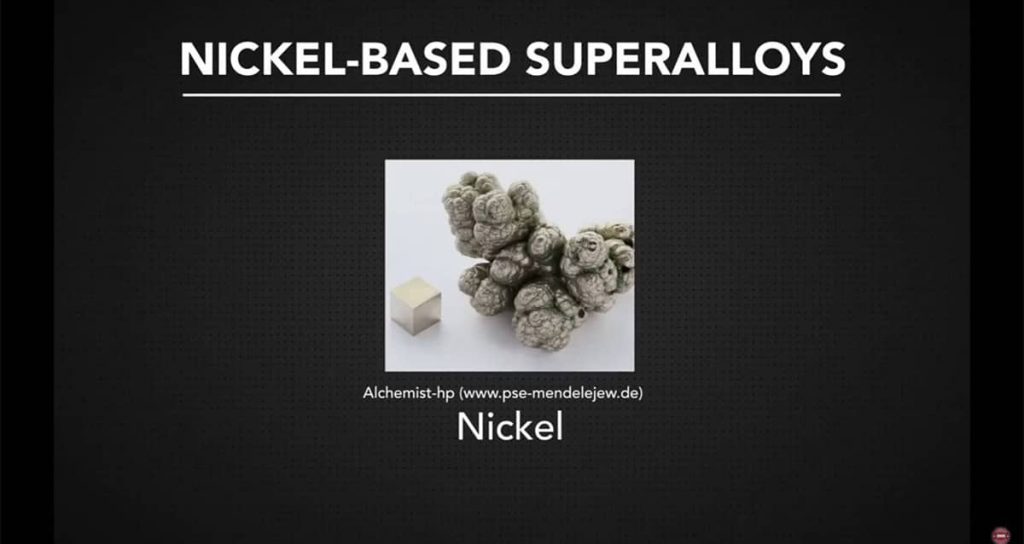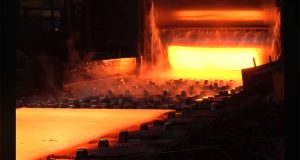Nickel is a metal that plays a critical role in various industrial applications due to its unique properties, especially its high melting point. With properties similar to iron and steel, nickel is not only durable but also highly resistant to corrosion. These characteristics make it an essential component in the production of superalloys, which are alloys that can withstand extreme conditions. One of the most significant aspects of nickel and its alloys is their ability to maintain strength and integrity at high temperatures, making them indispensable in industries that demand materials capable of enduring intense heat and stress. To test your understanding of these critical properties, take the quiz at SawbladeUniversity and validate your knowledge in a fun and engaging way.

Why the Melting Point of Nickel Matters
The melting point of nickel is a key factor in its widespread use, particularly in environments where metals are exposed to extreme temperatures. Some of the most critical applications of nickel-based alloys include:
- Nuclear Reactors: The ability to resist oxidation and corrosion while maintaining structural integrity at high temperatures makes nickel alloys ideal for use in nuclear reactors.
- Jet Engines: Nickel-based superalloys are essential in jet engine components, where they can withstand the extreme heat generated during operation.
- Industrial Applications: Beyond aerospace and nuclear sectors, nickel alloys are also used in various industrial applications where high-temperature stability and corrosion resistance are required.

Nickel-Based Superalloys: High Performance Under Pressure
Nickel-based superalloys are a crucial component in many high-performance engineering applications. These superalloys are typically composed of at least 40% nickel, and their exceptional properties are what make them so valuable:
- High Melting Point: Nickel-based alloys have extremely high melting points, which allow them to maintain their strength even under the most demanding conditions.
- Corrosion Resistance: These alloys do not oxidize easily, ensuring longevity and reliability in corrosive environments.
- Thermal Stability: Even at elevated temperatures, nickel alloys maintain their structural integrity, making them ideal for applications where thermal stability is a necessity.
Applications of Nickel-Based Superalloys
Due to their unique properties, nickel-based superalloys are used in a variety of critical applications, particularly in industries that require materials that can withstand high temperatures and corrosive environments. Some of the key applications include:
- Nuclear Pipe Reactors: The high melting point and corrosion resistance of nickel alloys make them perfect for use in the construction of nuclear reactors, where materials must remain stable under extreme conditions.
- Jet Engines: The aerospace industry relies heavily on nickel-based superalloys for jet engines, as these materials can endure the intense heat and pressure that are typical during flight.

Nickel’s High Melting Point: Key Specifications
Nickel’s high melting point is one of its most valuable attributes. Below are some key specifications related to nickel and its superalloys:
| Property | Specification |
|---|---|
| Melting Point of Nickel | 1455°C (2651°F) |
| Composition of Superalloys | Typically at least 40% nickel |
| Corrosion Resistance | High resistance to oxidation and corrosion |
| Thermal Stability | Maintains strength at elevated temperatures |

Importance of Nickel in Industrial Applications
Nickel’s exceptional melting point and resistance to corrosion make it an indispensable material in various industries. Whether in the construction of nuclear reactors or the manufacturing of jet engines, nickel-based superalloys are essential for ensuring the safety, reliability, and efficiency of these critical systems. Their ability to maintain structural integrity at high temperatures is what sets them apart from other materials, solidifying their role in high-performance applications.
Discover the Properties of Nickel-Based Superalloys on YouTube
Curious about the unique properties of nickel-based superalloys? Head over to Sawblade University’s YouTube channel and watch the video “2080 – 06 – Properties of Nickel-Based Superalloys.” This detailed video breaks down the essential characteristics that make these superalloys invaluable in high-temperature and high-stress environments. Whether you’re a seasoned professional or just starting out, this video offers valuable insights into why nickel-based superalloys are critical in various industrial applications. Don’t miss this opportunity to expand your knowledge—check out the video today!
Explore the Advantages of Bimetal Blades
If you’re looking to enhance your cutting tools and techniques, don’t miss our comprehensive guide on bimetal blades. In the article “Everything You Need to Know About Bimetal Blades,” we cover the key features, benefits, and applications of these versatile and durable blades. Whether you’re a professional or a DIY enthusiast, understanding the capabilities of bimetal blades can significantly improve your cutting efficiency and tool longevity. Make sure to check out the article to find out how bimetal blades can elevate your work.
Unlock Advanced Metalworking Skills at Sawblade University
For those looking to master the art of precision metalworking, Sawblade University is your go-to resource. With over 300 lessons covering a wide range of topics—including tool and die making, welding, and sheet metal working—you’ll find the training you need to sharpen your skills and advance your career. Visit sawbladeuniversity.com to explore our extensive content, including blogs, videos, and more, designed to help you become an expert in your craft. Don’t miss out on the opportunity to learn from industry professionals and take your metalworking abilities to the next level.
Nickel-Based Alloys: Versatile and Reliable
In conclusion, nickel and its alloys are crucial for many industrial applications due to their high melting point, thermal stability, and resistance to corrosion. These properties make nickel-based superalloys the material of choice for industries that require durable and reliable components capable of withstanding extreme conditions. Whether it’s in the aerospace industry, nuclear reactors, or other high-stress environments, nickel’s role cannot be overstated. Understanding these properties and their applications helps highlight the importance of nickel in advancing technology and maintaining safety in critical industries. Take the quiz and test your knowledge on Nickel-Based Alloys at SawbladeUniversity.com











